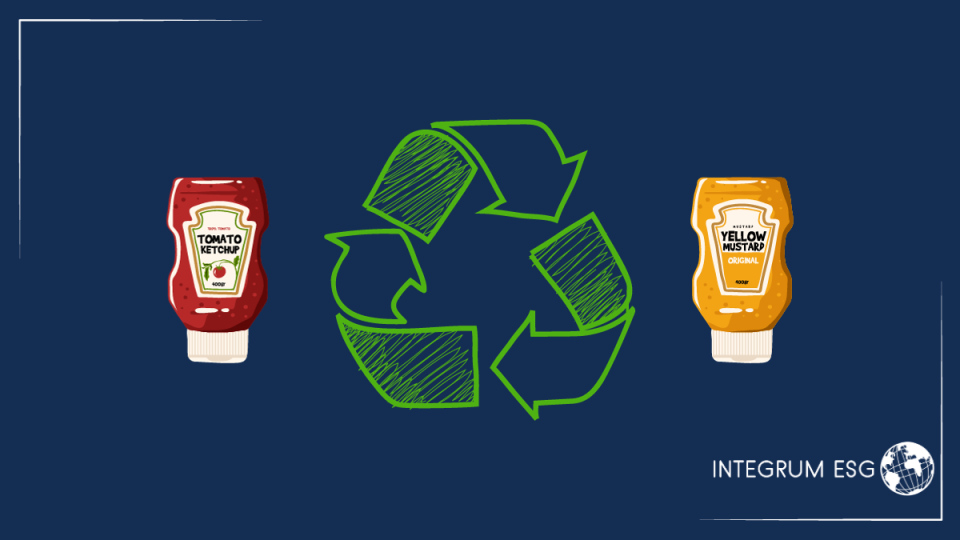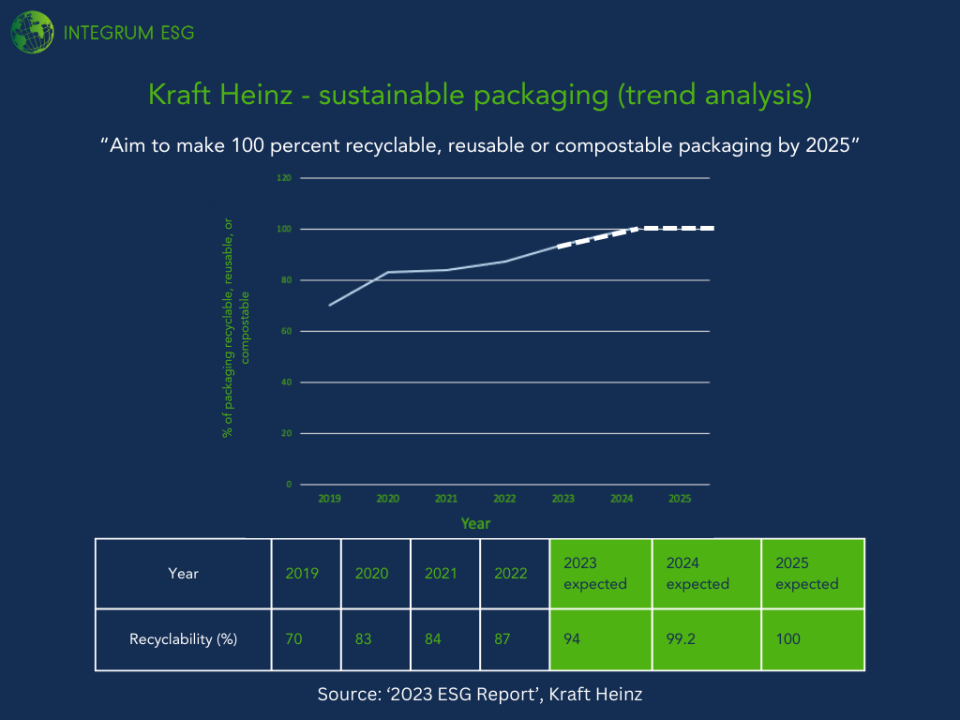
Company ESG Analysis – Kraft Heinz

In mid-October, Kraft Heinz published their most recent sustainability report which set out their ambitious “aim to make 100% recyclable, reusable or compostable packaging by 2025”.
In order to assess the company’s progress towards this 2025 goal, we conducted a simple trend analysis based on the last four years of data looking at the percentage of Kraft Heinz packaging that is recyclable.
Are Kraft Heinz really on track to meet their sustainable packaging goals?
Kraft Heinz, a global titan in the food and beverage industry, has embraced the mission of sustainable packaging.
Managing a vast portfolio of 200 brands, with 8 generating over $1 billion in annual revenue, the company produces a substantial amount of packaging, and so their commitment extends beyond a moral obligation – it’s a strategic imperative.
To assess Kraft Heinz’s progress toward its 2025 target, we conducted a simple trend analysis based on the last four years of data looking at the percentage of Kraft Heinz packaging that is recyclable.

The data revealed an encouraging trend, suggesting that Kraft Heinz is on track to meet its goal ahead of schedule (early 2024), with 87% of their packaging already being recyclable, reusable or compostable.
So, can we be satisfied that they have this situation in hand?
What is missing from this trend analysis?
Taking a closer look, we can see a few additional factors that need to be considered:
Firstly, it’s important to acknowledge a crucial aspect not covered in the trend analysis.
A significant part of Kraft Heinz’s non-recyclable product range comprises films and flexible materials, constituting the majority of the remaining 13%. With these materials being indispensable for food packaging due to their convenience, cost-effectiveness, and food safety benefits, they present a challenging hurdle in Kraft Heinz’s pursuit of this target.
Secondly, let’s delve into what Kraft Heinz mean by ‘recyclable, reusable or compostable’.
In their report, they provide transparency on the term ‘recyclable’ including “recyclable” (e.g. kerbside recycling), “widely recyclable – check locally” …and “other – store drop off or TerraCycle programs”. While this certainly represents a more environmentally friendly option than non-recyclable packaging, the reality is more complex than the initial claim suggests.
With consumers often lacking the time or means to visit store drop-off locations, the 87% statistic suddenly feels less promising.
Additionally, their report lacks clarity on what they mean by ‘reusable’ packaging. “Reusable” does not mean “reused”, raising questions on how likely it is for a labelled plastic or glass container that has contained one foodstuff to then be used by consumers to store another foodstuff.
What can we take away from this?
Thus, whilst Kraft Heinz’s trailblazing and target setting marks a step in the right direction, it is crucial for stakeholders to probe for a deeper understanding of what stands behind these goals and what persistent challenges exist.
Written by Integrum ESG Analyst Molly Frazer.